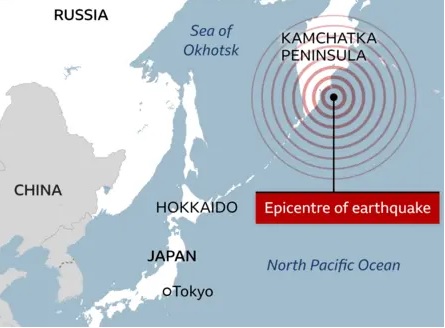An aftershock measuring 7.8 in magnitude has struck off the coast of Russia’s Kamchatka Peninsula, following the major 8.8 earthquake from July. While initial fears of a tsunami had emerged, those worries are now subsiding.
Just weeks after the July quake significantly impacted the region, a fresh earthquake rattled the area early on September 19.
Tsunami waves were indeed detected near the epicenter of this recent quake off Kamchatka’s eastern shores. However, by 5 PM EDT, officials from the Pacific Tsunami Warning Center announced an “all clear” for Hawaii, eliminating concerns over massive waves traveling across the Pacific.
According to the U.S. Geological Survey, the new quake has been assessed at 7.8 magnitude, which is considerably lesser than the earlier event, which released over 30 times more energy and generated waves with nearly 10 times its magnitude. (Earthquake measurements operate on a logarithmic scale.) The July earthquake ranked among the ten strongest recorded, but this latest tremor will not reach that level. As reported by Reuters, the region’s governor noted that there have been no damage reports following this recent event in the sparsely populated area.
The USGS has verified that the 7.8 magnitude quake is the largest aftershock stemming from the previous earthquake. Both seismic events occurred along the Kuril-Kamchatka plate boundary, which extends from northern Japan down the eastern coast of the Kamchatka Peninsula toward the Aleutians. This region is recognized as one of the most seismically active on the planet, as the Pacific plate is sub ducting beneath the North American plate.
While the July earthquake had raised alarms about potential tsunami threats, local geological conditions ultimately prevented such waves from forming.
If you live in Hawaii or along the western coast of the U.S. when a tsunami risk is declared, monitor tsunami alerts from the federal government and follow the directives of local emergency response personnel.

